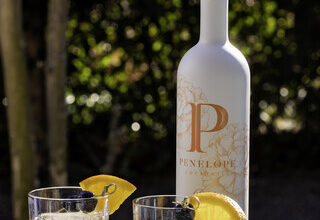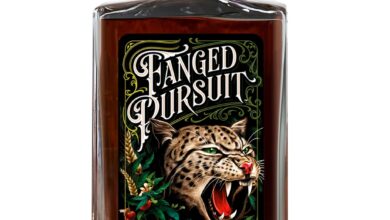Balcones Baby Blue Corn Whiskey Review
Corrected February 8, 2022
By Richard Thomas
Rating: B-

(Credit: Richard Thomas)
Balcones is one of the most prominent names in the American craft whiskey scene. A trailblazer in micro-distilling from a state that would become a perennial contender for America’s third whiskey state (after Kentucky and Tennessee). They started distilling in 2009, and although Garrison Brothers started production first, Balcones beat them to the punch in terms of releasing the first legal, Texas-made whiskey since Prohibition.
That first whiskey was Balcones Baby Blue. At the time, it was an almost revolutionary whiskey release, and even by modern standards it has some novel elements to it.
The whiskey is named for its mash bill and it’s aging. The former points to it’s 100% Hopi blue corn, while the latter points to a short aging in used 5-gallon barrels. That small barrel aging would become a signature of early craft whiskey, and the use of used barrels is mandated by Federal corn whiskey regulations. The blue corn mash, however, remains a novel feature, even several years later. An added, unusual note is that corn whiskey usually isn’t aged, let alone aged in small barrels. It’s not chill filtered and bottled at 92 proof (46% ABV).
The Whiskey
The appearance of Baby Blue is golden, like a pilsner without the carbonated fizz. Swishing the glass puts a thick-looking coat on the inside, which drops a few thick, fast-moving tears.
The nose is rich, as oily as it is buttery. It’s like someone smeared butter on the top of freshly baked, creamy and sweet cornbread while it was still sitting in a well-oiled pan. Hints of vanilla, baking spice and banana lurk underneath that hefty cornbread goodness.
A sip give more sweet corn across a rich, creamy mouthfeel. It’s very corny, but in a surprisingly sophisticated way. First, candy corn sweetness meets a note of fire-roasted sweet corn. Past that, the corn husk that is present in very nearly all corn whiskeys is there, and that is off-putting for some, but in Baby Blue it is quite muted. The banana, baking spice and vanilla from the nose are there too.
After that quite flavorful experience, the finish was almost a letdown, being a somewhat generic spicy and sweet conclusion.
On the one hand, Baby Blue shows that it’s a youthful baby. Yet for a whiskey that has hints of its lack of years, it is quite sophisticated. The use of blue corn takes the corn whiskey flavor profile in a direction that few whiskeys have pursued, and given the results, one has to wonder why.
The Price
In the United States, one can expect to pay $40 for a bottle of Baby Blue. In Europe, the import mark-up brings it closer to €60.



I tried the Baby Blue this week and totally disliked it. I found it bitter and harsh. I honestly can’t remember anything else I’ve had that was this bad.
I would like to taste it unaged to see what if any difference in it.
To me it tastes like drinking a really bad cheap tequila.
Agree 100%====== smells and tastes bitter like old time medicine
Someone gifted me a bottle of Baby Blue. I looked up this review as I sat down with my first sample.
To me it has a medicinal taste that is just nasty. The flavor is sharp without any subtleties or under tones. I agree with the reviewer that compared it to cheap, bad tequila.
Not a fan.